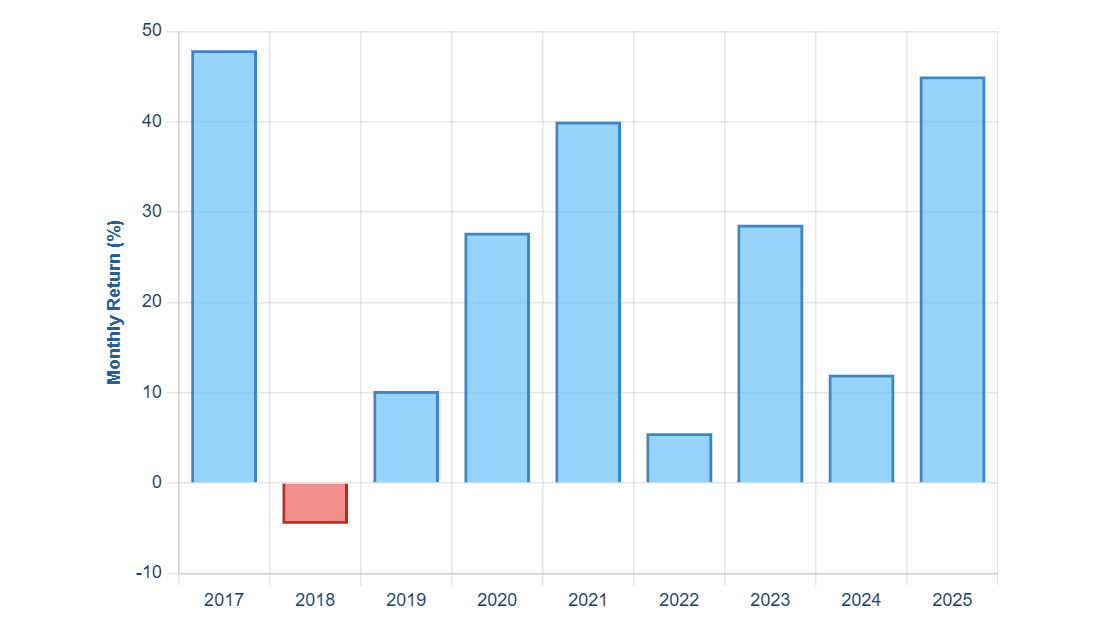Bitcoin Price Outlook for November 2025

- Current Price Stability with Volatility Ahead: As of November 2, 2025, Bitcoin trades around $110,000, holding above key supports like $109,200 amid tightening Bollinger Bands, signaling potential sharp moves.
- Short-Term Upside Potential: Research suggests Bitcoin could test $125,000–$134,000 by mid-November, driven by historical seasonal gains averaging 42.5% in November since 2013, though bearish scenarios point to dips below $100,000 if macroeconomic pressures intensify.
- Balanced Year-End View: Evidence leans toward $130,000–$150,000 by month-end, supported by institutional inflows and easing cycles, but controversy around liquidity risks and regulatory shifts warrants caution—analysts like Michael Saylor see $150,000–$200,000, while others warn of corrections.
- Key Influences: ETF inflows resuming at $90 million recently and Fed rate cuts (with 63% odds of another in December) bolster optimism, yet geopolitical tensions and exchange reserve declines add complexity.
Market Context
Bitcoin’s price has consolidated near $110,000 early in November 2025, reflecting a mix of institutional buying and broader market caution. Daily charts show lower highs but resilient support, with RSI neutral at 46.3 and MACD hinting at bullish crossovers. Volume dipped 2.7% in the last 24 hours, but on-chain metrics—like 7 million BTC returning to profit—indicate accumulation.
Historical Patterns
November has historically favored Bitcoin, with average gains of 42.5% since 2013. Post-halving cycles (the latest in April 2024) often see momentum build, as seen in prior eras where prices rose 142%–559% within 365 days. However, 2025’s cycle shows diminishing returns, aligning with mathematical models projecting moderated growth.
Influencing Factors
Positive drivers include renewed ETF inflows and corporate treasury allocations (e.g., Steak ‘n Shake). Bearish risks stem from potential crashes flagged by figures like Robert Kiyosaki, amid a Fear & Greed Index at 33. Global cap at $3.71 trillion supports recovery, but correlation to Nasdaq (0.45) ties it to equity volatility.
Analyst Consensus
Projections vary: CoinCodex sees $125,456 by November 6, while Long Forecast warns of $91,845 by month-end. Broader 2025 targets from Saylor and Kiyosaki range $150,000–$200,000, emphasizing supply scarcity post-halving.

In the volatile world of cryptocurrencies, Bitcoin’s trajectory for November 2025 emerges as a focal point for investors navigating a landscape shaped by historical precedents, macroeconomic shifts, and institutional momentum. As the digital asset hovers around $110,000 at the month’s outset, market participants are weighing seasonal tailwinds against lingering uncertainties, with projections spanning from cautious retreats to ambitious surges.
Bitcoin’s current positioning reflects a delicate equilibrium. Trading at approximately $110,163 on November 2—down 1.45% weekly but flat daily—the cryptocurrency maintains support above $109,200, a level underscored by recent Bollinger Band contractions that historically precede volatility spikes. This technical setup, combined with a 2.7% volume decline to $143.461 billion over 24 hours, suggests traders are positioning for a directional break. The broader market capitalization of $3.71 trillion, up 0.58% daily despite a 1.01% weekly loss, hints at underlying resilience, particularly as privacy coins rally and altcoins like Ethereum show short-squeeze potential with negative funding rates.
Historically, November stands out as Bitcoin’s jackpot month, delivering average returns of 42.5% since 2013. This seasonality aligns with post-halving cycles, where the April 2024 event—the fourth in Bitcoin’s history—continues to exert influence. Prior halvings have catalyzed gains ranging from 142% to 559% within the subsequent year, as supply issuance drops and scarcity intensifies. For instance, after the 2020 halving, Bitcoin climbed from $8,787 to $28,990 by year-end, a 230% increase. Similarly, the 2016 cycle saw a 284% rise. While diminishing returns characterize later cycles—evident in the 2020-2024 period’s moderated performance—models like PlanB’s Stock-to-Flow (S2F) still project upward pressure, with some analysts attributing 2025’s potential peak to this dynamic.
Macroeconomic catalysts further color the outlook. The Federal Reserve’s 25-basis-point rate cut in early November injects liquidity, with markets pricing in a 63% chance of another reduction in December. This easing cycle, potentially totaling three cuts by year-end, mirrors environments that have historically favored risk assets. Institutional inflows reinforce this narrative: Bitcoin ETFs saw $90 million in net positive flows on October 24, reversing prior outflows, while corporate adoptions—like Steak ‘n Shake’s treasury allocation—signal growing mainstream integration. On-chain data bolsters the case, with exchange reserves plummeting since September and nearly 7 million BTC shifting into profit over the past ten days, including 5.1 million held by short-term investors. Such metrics indicate conviction building among newer participants, transforming speculation into holding strategies.
Yet, controversy abounds. Robert Kiyosaki’s warnings of a “massive crash” underscore fears of overleveraged positions, even as Bitcoin holds $110,000 support. Geopolitical stability remains precarious, with trade tensions potentially eroding gains if tariffs escalate. The Fear & Greed Index at 33 reflects skittish sentiment, and the Altcoin Season Index at 32/100 suggests limited spillover. Counterarguments from optimists like Michael Saylor emphasize Bitcoin’s role as a hedge against inflation, projecting $150,000–$200,000 by year-end amid rising institutional reserves.
Projections for November vary widely, reflecting this duality. CoinCodex anticipates $125,456 by November 6, a 13.45% rise from current levels, while Changelly offers granular daily forecasts: $117,261 on November 15, dipping to $116,317 on November 16, before stabilizing. Binance sees modest growth, with November 30 around $110,075. More bearish views, like Long Forecast’s $91,845 month-end target (a 15.2% drop), cite potential breakdowns below $107,696. Bullish models from Brave New Coin eye $134,000 short-term, supported by retail inflows, while InvestingHaven broadens to $125,000–$200,000 for 2025 overall. Mathematical frameworks, such as those incorporating exponential decay of deviations from trend lines, suggest a top between $210,000 and $280,000 by cycle peak, potentially in late 2025.
To contextualize, consider the following table of analyst predictions for end-November 2025:
| Source | Predicted Price | Change from Current | Key Rationale |
|---|---|---|---|
| CoinCodex | $123,353 | +11.08% | Algorithmic forecast, 4.97% monthly growth |
| Changelly | $124,596 | +13.00% | Technical averages, max $118,899 |
| Long Forecast | $91,845 | -15.20% | Bearish trend continuation |
| Traders Union | $117,071 | +6.40% | Analytical end-2025 target |
| Brave New Coin | $134,000 | +21.70% | Short-term technical breakout |
| Michael Saylor/Kiyosaki | $150,000–$200,000 | +36%–82% | Institutional inflows, year-end optimism |
A second table highlights historical November performance:
| Year | November Return | Closing Price | Notable Events |
|---|---|---|---|
| 2013 | +452% | $1,124 | Early adoption surge |
| 2017 | +66% | $9,862 | Pre-2018 bubble build |
| 2020 | +42% | $19,625 | Post-halving momentum |
| 2021 | -7% | $56,989 | Peak cycle exhaustion |
| Average (2013–2024) | +42.5% | N/A | Seasonal strength |
Social media sentiment on X (formerly Twitter) echoes this divide. Posts from analysts like @Giovann35084111 reference power-law models for $210,000–$280,000 tops, while @ProfXAbdul outlines probabilistic ranges: 50% chance of $130,000–$160,000, with 15% upside to $201,000. Others, like @Crypto_Twittier, tie highs to ETF approvals, projecting $131,000–$158,000. Bearish voices caution of drops to $88,000 support amid volatility.
Broader 2025 forecasts incorporate quantile models and power laws, with ARK Invest’s halving cycle analysis showing performance multiples declining but still positive—post-2024 halving currently at breakeven, with potential for 10x gains in optimistic scenarios. Bloomberg’s logarithmic charts illustrate Bitcoin’s “add a zero” pattern, doubling time to reach $100,000 around 2025 based on volatility trends.
In sum, November 2025 could mark a pivotal inflection for Bitcoin, with historical seasonality and liquidity injections favoring upside, tempered by regulatory and economic risks. Investors should monitor ETF flows, Fed decisions, and technical breaks above $115,600 for confirmation of bullish continuation, or below $107,696 for downside validation. As always in crypto, conviction stems from data, not speculation—position accordingly.
Key Citations
- Bloomberg Intelligence
- Changelly Bitcoin Price Prediction
- Brave New Coin BTC Prediction
- CryptoNews Kiyosaki Warning
- Yahoo Finance Saylor/Kiyosaki
- Binance BTC Prediction
- Traders Union BTC Forecast
- Coinpedia November Analysis
- CoinCodex BTC Prediction
- Long Forecast BTC
- InvestingHaven BTC Predictions
- Coinpedia Jackpot Month
- AInvest Outlook
- Coinbase BTC Price
- X Post PlanB Predictio

